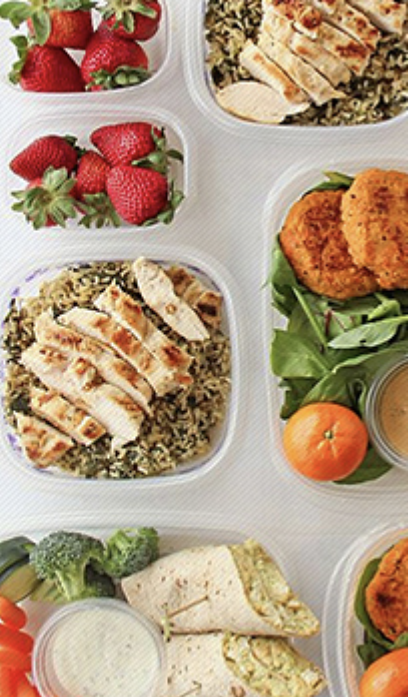When searching to bulk up, we strongly recommend a clean bulk. But a lot of people are confused about the right way to bulk up, or what a clean bulk means in the first place. As you may already know, bulking means you’re attempting to gain as much muscle as possible, packing on size, weight, and strength. But it is much easier said than done. There are various ways to do it and today we’re going to talk about the best way to bulk up with a clean bulk method.
The reason we’re saying it is because bulking the incorrect way could
- Yield no results – not gaining any muscle or strength.
- Gain a lot of fat in the process.
- Hinder your muscle definition.
- Lower your athletic performance.
- Even cause health issues.
What should you do? Bulk up the right way with a clean bulk program. This is the way you can gain muscle and strength without gaining fat in the process which usually leads to all other issues. Gaining fat is something that most of us usually want to avoid. A clean bulk, however, is going to help gain muscle in a sustainable and healthy way, without adding that excess fat.
But let’s check what a clean bulk means in the first place.
What is a Clean Bulk?
In short, a bulking plan requires a calorie surplus. Bulking up means that you gain weight. And in order to gain weight, you need to eat more calories than you’re burning. But the right bulking helps gain weight in the form of muscle, not fat. And you do that with high intensity resistance training, plenty of rest, and quality foods.
A clean bulk is often referred to as a lean bulk. This means that you’re paying close attention to the amount of calorie surplus you’re having and to the types of foods that those calories are coming from in order to avoid excessive fat gain.
Because bulking up means gaining weight, which can and usually does occur in the form of both muscle and strength, a lot of people mistakenly think that bulking up means eating anything and everything. This usually means a dirty bulking plan. And that’s the difference between a dirty and clean bulk. During a clean bulk, you’re limiting the calories from junk food, and although you aim for a calorie surplus, you are doing it in a controlled way.
That’s why I would rather recommend a clean bulk over a dirty bulk in most cases and for most people. Although, in some specific cases and for specific people, some still go for the dirty bulking plan. That’s because the weight gain during a clean bulk can be slower than other bulking methods.

Clean Bulk Foods vs Dirty Bulk Foods
The dirty bulking plan is like a dream come true for most people. That’s because you don’t really need to count your calories, you just eat in surplus – as much as possible. But the best thing is that there’s nothing that you just can’t have. A clean bulk plan doesn’t allow you to eat whatever you please. But in a dirty bulk, you can eat whatever you like. That’s why you aim to pack on as much weight as you can without worrying about fat gains.
This is the reason why a clean bulk may be a slower approach to bulking. Overall, a dirty bulk may be extremely effective for gaining muscle and strength fast. Plus, it is easier to follow. Nonetheless, there are side effects that you should consider. Those side effects are the reason why I would almost always opt and recommend a clean bulking plan. Those side effects include:
- Gaining way too much fat
- Feeling sluggish
- Increasing cholesterol
- High blood sugar levels
- High blood pressure
As you pay attention to how much exactly (controlled calorie surplus) you eat and especially to what you eat, you do not risk these issues with a clean bulk.
Starting a Clean Bulk Diet
In order to kickstart the clean bulk diet, you first need to find out your maintenance calories. This is the number of calories that help you maintain your current weight. The number greatly varies from one person to another, greatly depending on various factors, mostly on gender, age, weight, height, and weekly activity level. There are various online calculators that can help you determine your maintenance calories. It is an estimated number based on the answers you provide there.
Once you find out your maintenance calories, you just add about 10 to 20% more over it. So, if your maintenance calories are, for example, 2,000, then you need to eat 2,200-2,400 calories per day. It is important for you to adjust the calorie consumption every couple of weeks. That’s because you may notice that your progress stops, which means that you should up your calorie intake. Or you could notice that you gain way too fast, which means that you should lower your calorie intake. A healthy weight gain progress is about 0.4-0.7% in addition to your current body weight. If you add less, increase calories. If you add more, decrease them (unless you add lean muscle without fat).
Now that you know your calories, you need to learn about your bulking macros. In order to support muscle gain, you need to have at least 1 gram of protein per pound of body weight. Then you should make sure that about 40-60% of your calories come from carbs to replenish glycogen to give you fuel for your next workout and support muscle growth. The rest comes from healthy fats. Keep in mind that 1 gram of fat contains 9 calories. But 1 gram of carbohydrates and protein have 4 calories each.
Master Your Nutrition
I know that all those numbers can be a bit tedious. But this is what helps you keep track of your progress and puts you on the right path to progress. Moreover, after you’re going to rule it out, it will get much easier. As with anything else, it is harder in the beginning. Then you will know the amount of calories you need, foods you should eat, macronutrients you’re getting, and so on.
Whatever the case, in order to put on sufficient weight, you need sufficient calories. So, if you want to nail your bulking plan, you need to nail your calorie intake. Keeping track of your calories is harder in the beginning, then it is easier. But by doing so, it is easy to see how your food is broken down into macronutrients: protein, carbohydrates, and fats.
If you are going to pay attention to these three and make smart choices while looking at food as fuel, it helps you make your clean bulking more sustainable. Those who are new to clean bulking foods should start paying attention to the nutritional intake in fine detail. This will help keep track of your progress too.

In the end…
A clean bulk will break down the calories that you consume in the following macros:
- 40% protein
- 30% carbs
- 30% fats
While you can make some changes based on various factors, it shouldn’t be really different. The point is that you’re searching for a combination of healthy fats, plenty of protein, and enough carbs to provide your body with energy and help repair your muscles. This is the key to reaching your fitness goals.
For example, you could have slow release carbs such as brown rice to keep you full and energized for your workout. Then have lots of protein such as chicken breast to help recover muscles post-workout. Carbs are the main body’s energy source while protein is the main ingredient for muscle growth. Fats help stay healthy, strong, full, and energized, and aid recovery. It is important to have a healthy mix of all three!
Clean Bulk Foods
A dirty bulk allows you whatever you want. But in a clean bulk, you should pay attention to the foods that you have. A clean bulk focuses on healthy, whole, unprocessed foods. You may have a small amount of high calorie, processed foods during a clean bulk too. But their amount should be maintained at a minimum.
That’s why there are clean bulking foods that you can (and should) eat, and there are various foods that you should avoid during this period. Let’s analyze it a bit closer.

Foods to Eat
- Healthy fats. Good examples are avocados, nuts, olive oil, chia seeds, flaxseeds, fatty fish, nut butters, and others.
- Lean protein. Such as chicken, fish, turkey, pork, low fat cheese, eggs, greek yogurt, tofu, tempeh, protein powders, and others.
- High quality carbs. Think of oats, whole grain pasta, sweet and white potatoes, white and brown rice, quinoa, and others.
- Fruits. Such as berries, bananas, pineapples, apples, oranges, as well as numerous others that you may love.
- Legumes. Examples are chickpeas, black and great northern beans, kidney beans, and any other beans.
- Veggies and leafy greens. Such as cauliflower, broccoli, brussel sprouts, cabbage, spinach, collard greens, and others.
- Drinks. Mostly water, but also can have coffee in moderation, tea, kombucha, seltzer, and rarely diet soda.
Foods To Avoid
If you can’t completely avoid these foods, at least limit their intake during a clean bulk diet. Also, remember that some are worse than others on this list. That’s why, at least go for those that are healthier options.
- Processed / high fat foods. Avoid processed beef or pork sausages. Also, avoid high fatty cuts of pork or beef.
- Junk foods (that are usually highly processed). Some examples are fried foods, sugary cereals, fast foods, chips, cookies, full fat ice cream, bacon, candies, salami, ham canned soups, burgers, and pizza.
- Saturated fats. Such as various oils, margarine, and butter. Generally, anything that you know is unhealthy – better avoid it.
- Drinks. Sodas, sweetened coffee or teas, lemonade, and numerous other soft drinks. Even lots of sports drinks should be avoided too!
Get Lots of Rest
Now that you’re fueling your body with proper foods and that you’re regularly and intensively working your muscles, you need to provide proper rest periods. They are just as important for mass gain because this is the actual time when the “magic” happens and you grow muscles. If you’re going to hit the gym every day and you’re lifting heavy, you could get into the state of overtraining and feeling fatigued. This is because our muscles do not have enough time to recover. Moreover, if you’re feeling tired or overworked, you could have an even higher temptation to eat unhealthy foods, such as sugar or processed foods.
You need to have a proper balance of diet, rest, and workout. Finding the perfect balance is what helps you achieve the best goals, actually. It is important to aim for at least 8 hours of high quality sleep every night. Sometimes, you may need even more than that after very strenuous workouts such as 9-10+ hours a day. In short, you need to work hard, but then give your body plenty of time to recover. This is the time when the muscles actually repair and grow. On the other hand, if you rest for too long, there’s nothing that the body should repair, and then again, muscles do not grow. So make sure to hit the gym hard. Lastly, the body doesn’t have the fuel necessary to hit the gym hard and/or repair and grow the muscles without a proper diet.
This is the reason why only a perfect balance of diet, workout, and rest provides the perfect gains during a clean bulk plan.
Cardio During a Clean Bulk
Cardio is usually something that we do in order to help us stay fit and lose weight. While we do not aim to lose weight during a bulking cycle, performing some cardio during a clean bulk can help us promote cardiovascular health and help us stay fit (avoid fat addition).
Do not go for high intensity cardio, however. It may use up the fuel you need to lift heavy and recover. Opt for low-intensity cardio to warm up and/or finish your gym session. As said, it helps burn excess fat, keep you fit, and may aid recovery too.
Compound Movements
Targeting certain muscles to increase muscle growth in places we want it most is common. That’s why isolation lifts can be perfect. Nevertheless, compound exercises are crucial during a clean bulk cycle!
You do need those bicep curls to get huge arms, but compound exercises allow you to train multiple parts of the body at the same time. The more muscles you work during a lift, the more testosterone your body will secrete, and that will support muscle mass growth. Compound movements also lead to more resistance, promoting more mass gains.
Don’t bulk for too long
Whereas it is common for a lot of people to bulk for various periods, bulking for too long can lead to negative consequences. For example, bulking for too long, despite attempting a clean bulk, you could add too much fat. And if your body fat goes over 15%, your body’s insulin sensitivity starts declining.
In short, only bulk for as long as you do not get too much fat and stay healthy. Assess your results every 2-4 weeks and adjust calories after choosing whether you should continue or not.
Clean Bulking Benefits

Limits excess fat gain
It is normal to gain some fat during a bulking cycle. You increase your calorie intake and you tend to gain weight. Some of the gained weight can be in the form of fat. However, during a clean bulk plan, most of the weight gain is in the form of lean muscle. A dirty bulk can lead to more and faster weight gains, but a significant amount of it is in the form of fat. That’s because it doesn’t have a calorie controlled surplus approach and limiting food options as in a clean bulk cycle.
You still work in a calorie surplus with a clean bulking plan, but you eat fewer calories (the surplus rarely exceeds 500 calories per day) and you eat whole foods, avoiding junk, and highly processed foods.
Reduces health risks
As said, you limit fat by limiting calories and junk foods high in fat. Instead, you increase the amount of healthy foods that provide your body with the necessary micronutrients. With such an approach, you lower health risks that are commonly associated with consuming too many calories.
With a significant calorie surplus from unhealthy foods, you’re putting yourself at risk of high cholesterol, high blood sugar, and high blood pressure levels. These could lead to numerous health issues, affecting your organs. But a clean bulk involves a regulated (controlled) calorie surplus, calories that come from whole, unprocessed, and healthy foods. Anyway, it is important to understand that the side effects associated with a high calorie diet can vary from person to person. You should consider underlying health issues first.
Great Nutrition
During a clean bulk you are avoiding or at least limiting the junk, greasy, high fat, and other unhealthy foods. Most foods that you eat are whole, unprocessed foods. They provide proteins, healthy fats, and the right types of carbs. Therefore, you are naturally fueling your body and muscles with perfect nutrition. Usually, with those foods, you’re getting plenty of micronutrients such as vitamins, minerals, and antioxidants as well as fiber, and phytonutrients.
A diet rich in fiber will provide a good digestive system, in protein will provide muscle growth, the right type of carbs with energy, healthy fats with necessary hormones, and micronutrients to keep you overall healthy.
Clean Bulk Negatives
A clean bulk has more benefits in comparison to a dirty bulk. But there are still a few things you should take into consideration before going for it.
Not as fast results
A clean bulking diet requires a tightly controlled calorie surplus. That’s why there’s a chance that your bulking progress could slow down. Not to mention that those who are new to clean bulking could easily misjudge their calorie needs and/or intakes. This could cease your muscle gain before you even know it.
In order to avoid this, I would recommend starting with a solid surplus of about 500 calories per day. You should keep track of the progress and weight along the way. Then you could adjust your calories based on your progress and desired weight.
It is strict
A clean bulk diet is pretty strict. While you eat in surplus, you do not eat in a huge surplus and you do not eat whatever you like. So, you do provide your body with a variety of foods that provide the necessary fiber, vitamins, and protein, a clean bulk is still relatively strict.
When you eliminate or keep to a complete minimum the overly processed and sugar foods and you’re unfamiliar with this diet type, it could be hard to stay away from the foods that you can’t have. That’s why eating foods to prevent excess fat and support weight gain can be tricky. That’s why a lot of people think about all the foods that they shouldn’t be eating when on a diet. Many do not focus on the healthy, nutritious foods that we can have. This is hard to maintain long term. Especially when holidays and parties are coming along the way.
Ready To Clean Bulk?
Of course, you are! When you’re doing everything the right way, you’re going to notice how immensely effective this clean bulk diet is! While it may appear restrictive and tedious when it comes to numbers, it usually appears so only when you’re new to clean bulking.
You could also go for a golden balance when it comes to clean bulk and dirty bulk. This means that you still eat healthy 90% of the time. This means that 90% of your calories come from unprocessed, whole foods. But you can still allow 10% to come from high fat or high sugar foods.
 Especially if you’re going for the right anabolic steroids that can help you achieve your goals faster and easier. You can buy the best quality steroids for sale at HGH.to and also learn how to use them correctly. So, if you’re serious about lifting heavy and eating right for a clean bulk to achieve huge muscle gains, HGH.to is here to help you get there. We provide awesome quality bulking products that are going to support your bodybuilding goals. So, if you’re ready to push more weight and build muscle fast and efficiently, we’re always ready to help you out!
Especially if you’re going for the right anabolic steroids that can help you achieve your goals faster and easier. You can buy the best quality steroids for sale at HGH.to and also learn how to use them correctly. So, if you’re serious about lifting heavy and eating right for a clean bulk to achieve huge muscle gains, HGH.to is here to help you get there. We provide awesome quality bulking products that are going to support your bodybuilding goals. So, if you’re ready to push more weight and build muscle fast and efficiently, we’re always ready to help you out!
There’s no need to worry about the quality of these products and you can also save money with us for a better diet plan. Moreover, we provide the best shipping, customer support team, discounts, and numerous other bonuses!

